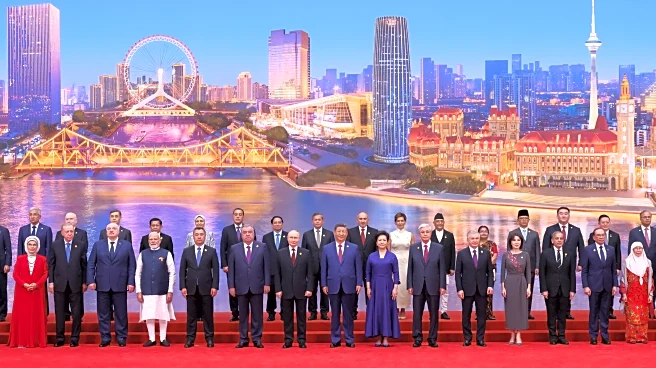What is the story about?
What's Happening?
The BRICS nations, comprising Brazil, Russia, India, China, and South Africa, are accelerating efforts to reduce reliance on the U.S. dollar through the $33 trillion BRICS Cross-Border Payments Initiative. This initiative integrates local-currency systems like India's UPI and China's digital yuan, facilitating transactions in local currencies. The move comes as the U.S. imposes tariffs on Indian goods, prompting India to strengthen ties with Russia and China. The BRICS bloc is also expanding with the inclusion of Saudi Arabia and Egypt, enhancing its economic influence. The U.S. response, involving threats to leverage SWIFT and dollar-based systems, has further motivated these nations to develop a parallel economic framework.
Why It's Important?
The shift away from the dollar-centric system by BRICS nations signifies a potential realignment in global economic power. This de-dollarization effort could impact U.S. economic influence and the stability of dollar-based financial systems. For investors, the focus is shifting towards BRICS-linked assets, such as rupee bonds and blockchain trade, as a hedge against dollar depreciation. The strategic pivot towards clean energy and manufacturing in the Global South, bypassing U.S. tariffs, highlights a broader trend of economic diversification and resilience against Western economic policies.
What's Next?
As BRICS nations continue to develop their economic architecture, the U.S. may face challenges in maintaining its financial dominance. The expansion of BRICS+ and the establishment of alternative financial institutions like the New Development Bank could further diminish the influence of Western-dominated entities like the IMF and World Bank. The ongoing geopolitical realignment may lead to increased collaboration among Global South nations, potentially reshaping global trade and investment patterns.
AI Generated Content
Do you find this article useful?
















